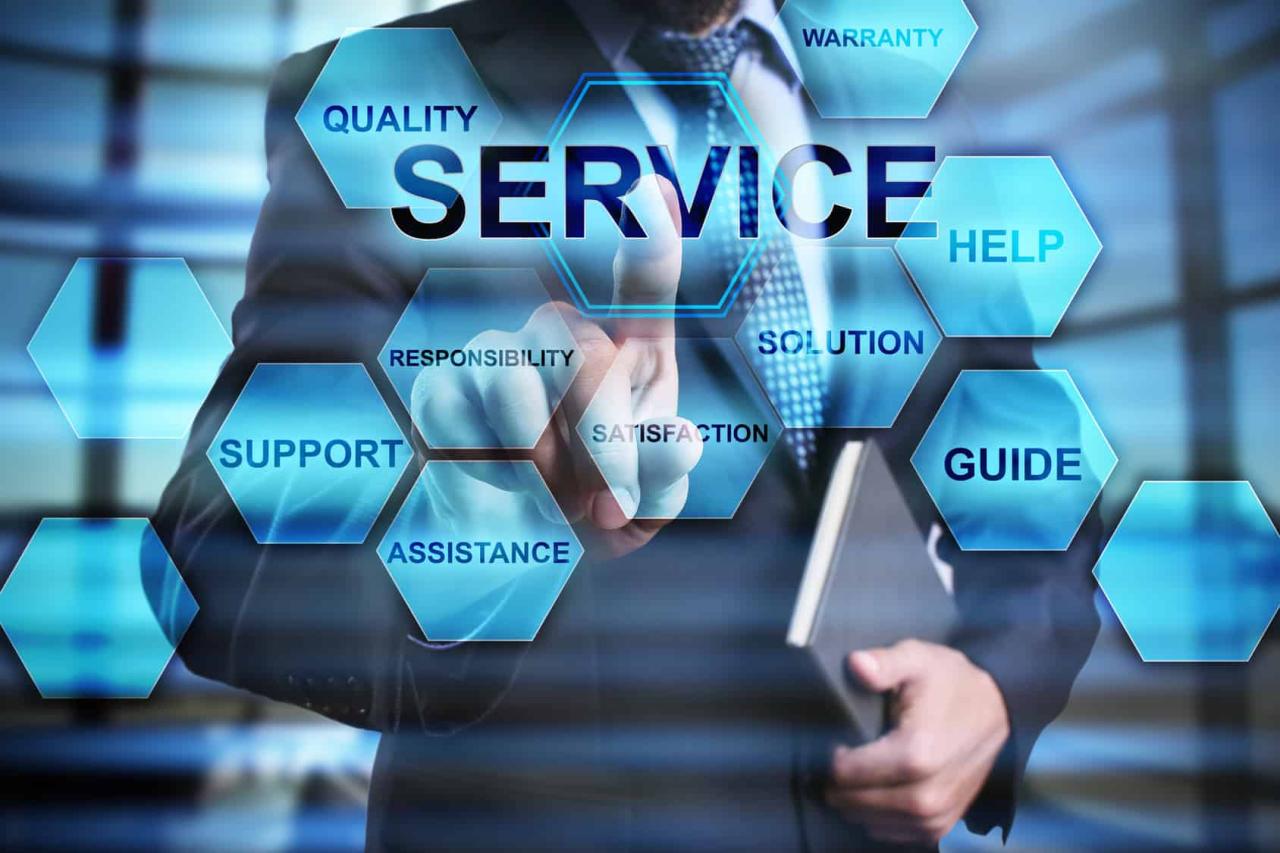What is CX Technology: A Guide to Enhancing Customer Experiences
What is CX technology? It’s the innovative force shaping the way businesses interact with their customers, creating seamless and personalized experiences. CX technology encompasses a wide range of tools and […]

What is CX technology? It’s the innovative force shaping the way businesses interact with their customers, creating seamless and personalized experiences. CX technology encompasses a wide range of tools and strategies, from sophisticated data analytics to intuitive chatbots, all designed to understand customer needs, anticipate their desires, and deliver exceptional service.
Imagine a world where customers are greeted by name, offered tailored recommendations based on their past purchases, and receive instant support whenever they need it. This is the power of CX technology, transforming customer interactions from transactional to truly engaging and memorable.
Defining CX Technology
CX technology, or customer experience technology, encompasses a range of tools and platforms designed to enhance and optimize the customer journey. The purpose of CX technology is to improve customer satisfaction, loyalty, and advocacy by providing seamless, personalized, and engaging experiences across all touchpoints.
Types of CX Technology
CX technology encompasses a diverse range of tools and platforms, each serving a specific purpose in enhancing the customer experience. Here are some examples:
- Customer Relationship Management (CRM) Systems: CRMs are central to managing customer interactions, storing customer data, and providing a unified view of customer interactions across different channels.
- Live Chat and Messaging Platforms: These tools enable real-time communication with customers, providing instant support and personalized interactions.
- Knowledge Management Platforms: Knowledge bases and self-service portals empower customers to find answers to their questions independently, reducing support tickets and improving efficiency.
- Customer Feedback Tools: Surveys, polls, and feedback forms gather valuable insights from customers, allowing businesses to identify areas for improvement and enhance their offerings.
- Personalization Engines: These tools leverage customer data to personalize website content, product recommendations, and marketing messages, creating a tailored experience.
- Analytics and Reporting Platforms: These tools provide insights into customer behavior, engagement, and satisfaction, enabling businesses to track performance and make data-driven decisions.
Real-World Scenario
Consider a leading e-commerce platform that utilizes CX technology to enhance its customer experience. The platform leverages a CRM system to track customer interactions, personalize product recommendations based on past purchases and browsing history, and provide targeted marketing campaigns. The platform also offers a live chat feature for instant customer support, a knowledge base for self-service, and a feedback system to gather customer insights. This comprehensive approach to CX technology ensures a seamless and personalized experience for customers, leading to increased satisfaction and loyalty.
Emerging Trends in CX Technology: What Is Cx Technology

The landscape of customer experience (CX) technology is constantly evolving, driven by advancements in artificial intelligence (AI), data analytics, and user interface design. These emerging trends are transforming how businesses interact with their customers, creating more personalized, efficient, and seamless experiences.
The Rise of AI-Powered CX
AI is rapidly changing the way businesses deliver CX. From chatbots to virtual assistants, AI-powered tools are automating tasks, providing personalized recommendations, and offering real-time support.
- Chatbots are becoming increasingly sophisticated, capable of understanding complex queries, providing relevant information, and even handling transactions. For example, a chatbot on an e-commerce website can guide customers through the purchase process, answer questions about product features, and provide personalized recommendations based on past purchases.
- Voice assistants, like Amazon Alexa and Google Assistant, are becoming ubiquitous, allowing customers to interact with businesses through voice commands. These assistants can be used to make appointments, order products, and access information without having to manually search for it. For instance, a customer can use a voice assistant to book a flight or order a pizza simply by speaking their request.
- AI-powered personalization enables businesses to tailor their interactions with each customer based on their individual preferences, past behavior, and demographics. This can include providing personalized product recommendations, sending targeted marketing messages, and customizing website content. For example, a streaming service might recommend movies based on a user’s viewing history, or a clothing retailer might send emails promoting items similar to those a customer has previously purchased.
Impact on the Future of CX, What is cx technology
These emerging trends have the potential to significantly impact the future of customer experience. Businesses that embrace these technologies will be able to:
- Improve customer satisfaction by providing faster, more efficient, and personalized service.
- Reduce costs by automating tasks and improving operational efficiency.
- Gain a competitive advantage by offering a superior customer experience that sets them apart from their competitors.
- Increase customer loyalty by building stronger relationships with their customers through personalized interactions.
Challenges of Adopting Emerging CX Trends
While the potential benefits of these trends are significant, businesses must also consider the challenges associated with adopting them.
- Data privacy and security are paramount concerns, as businesses collect and analyze vast amounts of customer data. Ensuring the security and privacy of this data is essential to maintaining customer trust.
- Ethical considerations are also important. Businesses must ensure that AI-powered CX tools are used responsibly and ethically, avoiding bias and discrimination.
- Integration and implementation can be complex, requiring significant investment in technology and expertise. Businesses need to carefully plan their implementation strategies to ensure a smooth transition.
- Customer acceptance is another key challenge. Customers may be hesitant to embrace new technologies, particularly if they are unfamiliar with them or have concerns about their privacy. Businesses need to educate their customers about the benefits of these technologies and address their concerns.
Choosing the Right CX Technology

Selecting the right CX technology is crucial for any business looking to enhance customer experiences and drive growth. The right solution can streamline processes, personalize interactions, and gather valuable insights to improve customer satisfaction and loyalty. However, with a vast array of options available, choosing the right fit for your specific needs and goals can be a challenge.
Evaluating CX Technology Options
To ensure you choose the right CX technology, consider these key factors:
- Business Objectives: Clearly define your CX goals, such as improving customer satisfaction, increasing retention, or boosting sales. Align your technology selection with these objectives.
- Customer Journey Mapping: Understand your customer journey and identify touchpoints where technology can enhance interactions. This will help you determine the specific functionalities you need.
- Data Integration and Analytics: Evaluate the technology’s ability to integrate with your existing systems and provide actionable insights from customer data. This is crucial for making data-driven decisions.
- Scalability and Flexibility: Choose a solution that can adapt to your growing business needs and accommodate future expansion. Consider the technology’s scalability and flexibility in handling increasing data volumes and customer interactions.
- User Friendliness and Training: Opt for technology that is easy to use and implement, minimizing the need for extensive training for your employees. This ensures a smooth adoption process.
- Cost and ROI: Consider the initial investment, ongoing maintenance costs, and potential return on investment. Ensure the technology aligns with your budget and delivers a positive ROI.
- Security and Compliance: Prioritize solutions that meet industry security and compliance standards, protecting customer data and ensuring privacy.
Integrating CX Technology
Successful integration of CX technology involves a multi-step process:
- Needs Assessment: Conduct a thorough assessment of your current CX processes and identify areas where technology can improve efficiency and effectiveness.
- Solution Selection: Based on your needs assessment, select a CX technology solution that aligns with your business objectives and budget.
- Implementation Planning: Develop a comprehensive implementation plan that Artikels the timeline, resources, and key stakeholders involved.
- Data Migration and Integration: Migrate relevant data from your existing systems to the new CX technology platform and ensure seamless integration.
- User Training and Adoption: Provide adequate training to employees on using the new technology, fostering a smooth adoption process.
- Testing and Optimization: Conduct thorough testing to ensure the technology functions as intended and optimize its performance based on user feedback.
- Ongoing Monitoring and Analysis: Continuously monitor the performance of the CX technology and analyze data to identify areas for improvement and adjust strategies accordingly.
Key Considerations for Different Business Types
The specific CX technology requirements vary depending on the business type:
| Business Type | Key Considerations |
|---|---|
| E-commerce | Personalized product recommendations, seamless checkout experience, proactive customer support, post-purchase engagement |
| Financial Services | Secure online banking, personalized financial advice, real-time customer support, fraud detection |
| Healthcare | Patient portal access, appointment scheduling, telemedicine, personalized treatment plans |
| Hospitality | Online booking, guest communication, personalized services, loyalty programs |
Last Point

In conclusion, CX technology is not just about implementing the latest tools; it’s about cultivating a customer-centric culture that prioritizes understanding and exceeding expectations. By embracing the principles of CX technology, businesses can unlock a world of possibilities, driving customer satisfaction, fostering loyalty, and ultimately, achieving sustainable growth.
CX technology is all about enhancing customer experiences, whether it’s through personalized interactions, streamlined processes, or innovative solutions. To truly achieve this, businesses need to embrace cutting-edge technology, and that’s where companies like renew technologies come in. They specialize in providing the tools and expertise needed to build a seamless and satisfying customer journey.
By incorporating these advanced technologies, businesses can elevate their CX efforts and create lasting positive impressions.





